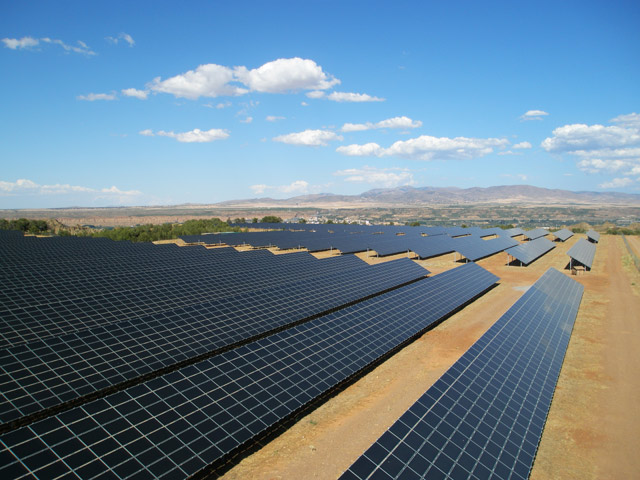An India Ratings and Research (Ind-Ra) report attributes the continuous decline in Indian solar power tariffs since the start of FY2020-21 to a mix of structural and state-specific factors.
During FY21, solar power tariffs declined to INR2.36/kWh in June-July 2020 and further to INR2.0/kWh in November 2020. Even the highest bid (INR2.43/kWh) in the November auction was lower than the tariffs seen earlier.
Ind-Ra stated that the decline in tariffs is being driven by a lower capital cost/MW of around INR40million/MW due to advanced panel designs enabling a higher capacity utilization factor (CUF), a reduction in panel costs globally, and lower financing costs.
State-specific factors impacting the tariffs in the latest round include an exemption of INR0.2 million/MW of cess levied by the Rajasthan government on project development in the state. The exemption could translate to savings of 10-12 paise/kWh as the offtake is for the Rajasthan Urja Vikas Nigam Ltd. Safeguard duty exemption on panel imports is another factor driving cost reduction, according to the rating agency.
Given that the plant would be set up in Rajasthan, which has proven solar potential, the average capacity utilization factor (CUF) is expected to be higher at over 25%. In the latest rounds, bidders are also banking on the interstate transmission system charges waiver for the projects commissioned before June 2023, it stated.
Operating parameters
Ind-Ra estimates that the use of bifacial modules with trackers could increase CUF by around 4%. Additionally, the panel costs declined to less than US$0.4/MW in 2019 from around US$3/MW in 2009.
The AC:DC ratio for most solar plants has inched upwards to around 1.5x, resulting in a higher CUF and addressing degradation over time, it stated.
Ind-Ra said the latest bids exploit the solar potential of states such as Rajasthan and Gujarat, resulting in a higher plant load factor. However, the auctions that mandate ‘Made in India’ equipment and are not exempt from the safeguard duties may not attract such low tariffs.
Financing cost
Ind-Ra estimates that a lower funding cost to foreign and domestic developers has resulted in a 10-15 paise/kWh tariff decline.
Interest rates are declining both domestically and globally, and Ind-Ra expects them to remain muted over the medium term.
The lower interest rates have benefitted high rated players who have sound access to financial markets and can therefore enjoy low interest rates. Entities that are backed by foreign parents are also looking at exploiting foreign markets for project debt tie-ups, given the prevailing low interest rates and hedging costs, Ind-Ra stated.
Furthermore, given the decline in the risk-free rate, the return expectations have lowered by 0.5%-1%. Additionally, the funding patterns adopted by these players ensure a capital churn and reduced refinancing risk. Once the construction phase is over, the financing pattern typically sees a shift with project funding changing from a debt:equity ratio of 75:25 to 80:20, it said.
This content is protected by copyright and may not be reused. If you want to cooperate with us and would like to reuse some of our content, please contact: editors@pv-magazine.com.









By submitting this form you agree to pv magazine using your data for the purposes of publishing your comment.
Your personal data will only be disclosed or otherwise transmitted to third parties for the purposes of spam filtering or if this is necessary for technical maintenance of the website. Any other transfer to third parties will not take place unless this is justified on the basis of applicable data protection regulations or if pv magazine is legally obliged to do so.
You may revoke this consent at any time with effect for the future, in which case your personal data will be deleted immediately. Otherwise, your data will be deleted if pv magazine has processed your request or the purpose of data storage is fulfilled.
Further information on data privacy can be found in our Data Protection Policy.